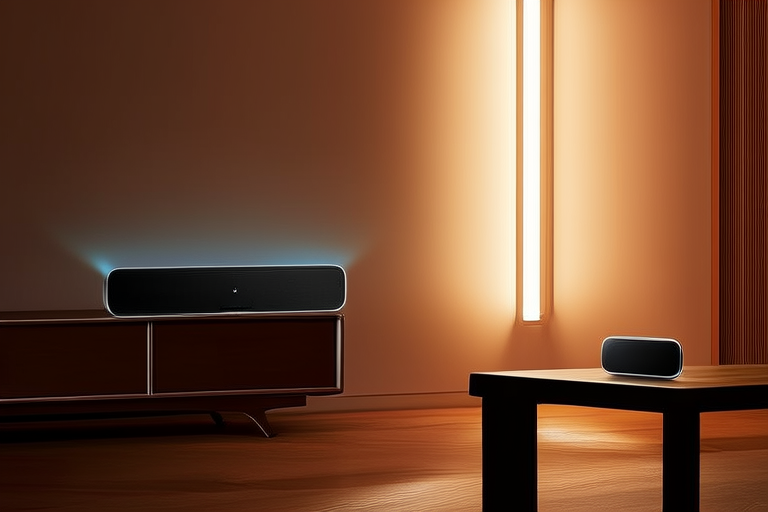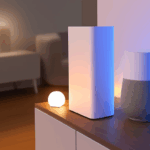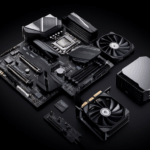How Smart Homes Are Revolutionizing Daily Living
In today’s fast-paced world, technology has seamlessly woven itself into every aspect of our lives, from smartphones to social media. One of the most exciting advancements in recent years is the rise of smart homes. These homes are equipped with a variety of interconnected devices and systems that allow for automation, remote control, and enhanced functionality. As more people adopt these technologies, the way we live, work, and interact with our environments is being transformed in profound ways. This article explores the many facets of smart homes, from their basic components to their potential to revolutionize daily living.
What Constitutes a Smart Home
A smart home is essentially a living space that integrates various electronic devices and systems to enhance convenience, comfort, and efficiency. Common smart home devices include smart thermostats, lighting systems, security cameras, voice assistants, and more. These components work together to create an integrated ecosystem that can be controlled via a smartphone app, tablet, or voice commands. For instance, a smart thermostat learns your preferred temperature settings and adjusts accordingly, while smart lights can be programmed to turn on and off at specific times or respond to voice commands.
The true power of a smart home lies in its ability to connect and communicate between different devices. Imagine walking into your home and having the lights automatically turn on, the temperature adjusted to your liking, and your favorite music playing—all without lifting a finger. This level of integration is made possible by the Internet of Things (IoT), which allows devices to share data and coordinate actions.
Enhancing Convenience and Comfort
One of the primary benefits of smart home technology is the significant improvement it brings to daily convenience and comfort. Tasks that were once time-consuming or cumbersome can now be automated or controlled remotely. For example, you can set up a routine where your coffee maker starts brewing when your alarm clock goes off, or you can adjust the thermostat before arriving home to ensure your house is at the perfect temperature.
Entertainment systems also benefit greatly from smart home integration. With a few taps on your phone, you can control multiple devices simultaneously, switching between streaming services, adjusting volume levels, and even syncing playlists across different rooms. This level of control not only enhances the entertainment experience but also adds a layer of convenience that traditional setups simply cannot match.
Energy Efficiency and Cost Savings
Smart homes offer substantial benefits when it comes to energy efficiency and cost savings. By optimizing the usage of various appliances and systems, homeowners can significantly reduce their utility bills. For instance, smart thermostats can learn your habits and adjust heating and cooling schedules accordingly, ensuring that energy is only used when necessary.
Additionally, smart appliances, such as refrigerators and washing machines, can be programmed to run during off-peak hours when electricity rates are lower. Some systems even allow you to monitor and manage your energy consumption in real-time, providing insights into areas where you can cut back. These features not only help save money but also contribute to environmental sustainability.
Security and Safety Features
Security and safety are critical aspects of any home, and smart home technology offers numerous enhancements in this area. Advanced features such as smart locks, surveillance cameras, and motion sensors provide homeowners with peace of mind. For example, smart locks can be unlocked remotely via a smartphone app, allowing family members or guests to enter the home without needing a physical key.
Surveillance cameras equipped with facial recognition software can alert homeowners if unfamiliar faces are detected, while motion sensors can trigger alarms or send notifications to your smartphone. Additionally, smart smoke detectors and carbon monoxide sensors can alert you instantly if there is a potential danger, giving you time to take action before it escalates.
Health and Wellness Integration
Smart homes are increasingly integrating health and wellness features to support better living. Devices that monitor air quality, sleep patterns, and fitness activities are becoming more common. For instance, air quality monitors can detect pollutants and allergens, alerting you to open windows or run a purifier when needed. Sleep trackers can analyze your sleep patterns and suggest adjustments to improve restfulness.
Emerging trends in this area include wearable devices that sync with home systems to provide personalized health insights and recommendations. These innovations not only promote healthier lifestyles but also empower individuals to take control of their well-being.
Challenges and Considerations
While the benefits of smart homes are undeniable, there are also some challenges to consider. Privacy concerns and cybersecurity risks are among the top issues. As more devices are connected to the internet, the risk of data breaches increases. To mitigate these risks, it’s important to choose reputable brands and keep firmware updated. Additionally, initial setup costs can be high, although the long-term savings often outweigh the upfront investment.
Future Prospects
The future of smart homes holds immense promise. New innovations, such as AI-powered personal assistants that learn your preferences over time, could further enhance convenience and comfort. We may also see advancements in renewable energy integration, with smart homes generating and storing their own power. As technology continues to evolve, smart homes will become even more intuitive and responsive to the needs of their inhabitants.
Conclusion
Smart homes are indeed revolutionizing daily living by offering unparalleled convenience, comfort, and efficiency. From automating everyday tasks to enhancing security and promoting health and wellness, these technological advancements are making our homes smarter and more livable. While there are challenges to consider, the benefits far outweigh the drawbacks. As smart home technology continues to evolve, it will play an increasingly important role in shaping the future of our living spaces. Embracing these innovations can lead to a more connected, efficient, and enjoyable lifestyle.


